No matter where you live, disaster and severe weather can strike, resulting in blackouts and contaminated drinking water. Hygiene needs are a primary concern after disaster events like hurricanes, tornadoes, fires, and floods.

Blackouts can be a real annoyance, but hopefully, a few days without electricity is all you’ll have to deal with. Here are a few things to make it easier to manage during a disaster at home–without generators and other expensive equipment.
Equipment for Disasters and Power Outages
First, if you have an electric stove at home, have an alternative option for cooking. If you have a gas-operated stove, remember that you need a lighter or a match to ignite the burner. Gas ovens without a pilot light or electric ignitors will not ignite manually. Propane grills, especially those equipped with a side burner, are nice to have year-round. In severe weather, cooking outside may not be an option. In that case, a good alternative is a portable gas camping stove.
1. Portable Gas Stove
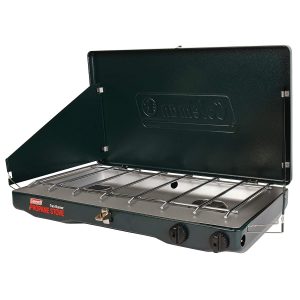
For home use, camping stoves marketed for car camping are preferable because they often contain two large burners with a surface area to hold standard household pots and pans. Most camping stoves also have a flame adjustment or simmering capability.
On the other hand, backpacking stoves are compact and equipped with a tiny burner for specialized cook sets. Flame adjustments are limited to non-existent. Backpacking stoves work best for rapidly boiling water as opposed to cooking, simmering, or frying. Backpacking stoves will work fine in a pinch, but investing in a larger portable stove or grill with a side burner might make more sense if you live in an area with frequent power outages.
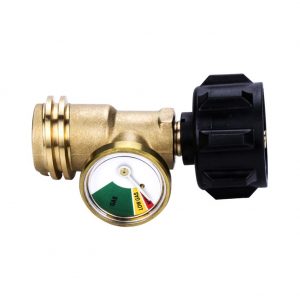
Have enough stove fuel to last for 7 days. Don’t rely on driving to the next town for food services or fuel. In a disaster, fuel shortages are common – both for your vehicle and appliances. Besides, roads may be impassible. Keep your car at home and only use it for emergencies.
- If using fuel from a propane tank, install a gauge to monitor fuel levels and usage.
Eat Perishable Foods First. During long-term blackouts, you first want to consume perishable foods, such as dairy, eggs, and meat, that can spoil and make you sick if not kept at a proper temperature. If you think the power outage will be short-term, keep the refrigerator door closed as much as possible to prevent the food inside from warming up.
Monitor your freezer and refrigerator temperature with a household appliance thermometer to determine if your food is safe to eat during and after a power outage. Safe temperatures are 40 °F or lower in the refrigerator and 0°F or lower in the freezer. Generally when a perishable food exceeds 40 °F for more than 4 hours, it is not safe to consume. Check here for a guide on food safety during power outages.
2. Flashlights
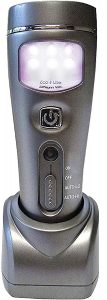
Have flashlights with spare batteries for every household member. We recommend having at least one power failure LED light equipped with a sensor. These LED lights are meant to be permanently plugged into an outlet. During a power outage or when dark, the light instantly comes on to brighten the room. It can also be used as a portable flashlight.
The one pictured here has been operating daily in our home for over 5 years and has helped us through many power outages. The downside is that the battery is not removable and requires electricity to recharge, so you will also want to have a conventional flashlight.
3. Battery-operated Radio
A battery-operated radio will allow you to listen to local radio reports. The hand-cranked radio pictured is a comprehensive multi-purpose emergency device– you can tune into NOAA weather, listen to the radio, keep cell phones or USB devices charged, or use it as an LED light.
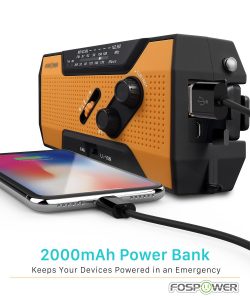
4. Rechargeable Cell Phone Charger
A portable cell phone charger is a must if you need to use your phone during power outages. Make sure you choose one with enough mAh to charge any devices you need at least 2 – 3 times. Between 10000 to 20000 mAh is enough for most people to charge modern smartphones at least two times.
5. Purified Water and Water Filtration Devices
Because water is key to survival, having clean water can’t be overlooked. During disaster events, access to clean tap water is unreliable. Don’t count on refrigerator water filters to protect you. While these effectively reduce chlorine taste and odor, they can’t eliminate all pathogens or viruses. Besides, depending on the circumstances, water may not be made safe to drink if you boil, filter it, or disinfect it. For instance, in chemical contamination cases to the municipal supply, nothing you can do will make the water safe to drink — boiling, filtering, purifying, adding chlorine, or other disinfectants. Your only option is bottled/stored water or collecting water from an alternative source. If you have to travel to a nearby river or stream for water, consider having an economical portable device such as LifeStraw’s Filter Bottle, which removes parasites and bacteria. For international travel, or in wilderness areas where water may contain viruses, you need a water purifier. Only water purifiers are capable of removing viruses. Read more about the different devices for treating and purifying water.
6. Hand Sanitizer / Wet Wipes
Finally, if the water gets funky, you can’t count on it to keep your hand and body clean. Have a set of wipes or hand sanitizer to reduce water consumption. That way, you can save your filtered water for drinking and brushing your teeth only.
Food to Stock up on For Disasters and Power Outages
The food you should have on hand is similar to what you’d take to eat on a camping trip. We recommend you keep a combination of both dry goods and wet-packed canned/ retort pouched foods. Having meals on hand that you just need to heat up (no water required) can save you when water is limited or chemically tainted. This way, you can reserve sanitized or bottled water for drinking only.
Unless you live in a remote location or a high-risk disaster area, 5 to 7 days of non-perishable food and bottled water is likely all you will need.
1. Canned and Retort Pouched (Wet-Packed) Foods
As mentioned, canned and pouched foods are an obvious choice for storing at home during power outages. Because these are packed in water, generally, all you have to do is heat them and serve.
If you plan to eat from cans, make sure you have a manual can opener! So many households rely on electric can openers and forget how difficult cans are to open without electricity. Using a knife to pierce through a can lid is possible but is time-consuming and dangerous. By far, the easiest to operate are household can openers like these. Survival can openers are another option and are less likely to break (no moving parts).
- Canned/Wet Packed Pouched Meals that simply need to be heated up are good to have when water is limited or toxic. One choice we recommend is the pre-cooked and seasoned rice with the Tasty Bite Indian lentil meal pictured below.

2. Dry Pre-cooked / Instant Food
Besides canned goods, look for shelf-stable dry pre-cooked seasoned grains and meal mixes. If you are using a portable stove, look for quick-cook/instant dry foods with cook times of 10 minutes to conserve stove fuel.
Dry Food Options to Consider
Instant Rice
Instant rice is fully cooked, whereas parboiled rice is partially cooked. This distinction makes a big difference when it comes to fuel consumption. Parboiled rice requires a long simmer, and thus more fuel. Instant rice needs no simmering and will reconstitute fully by soaking it in boiling water.
- Preparing instant dried rice is very simple: boil water, stir in rice, shut off the gas, and keep covered for 10 minutes.
- We recommend Instant Brown Rice instead of instant white rice. Brown rice contains more nutrients and fiber.
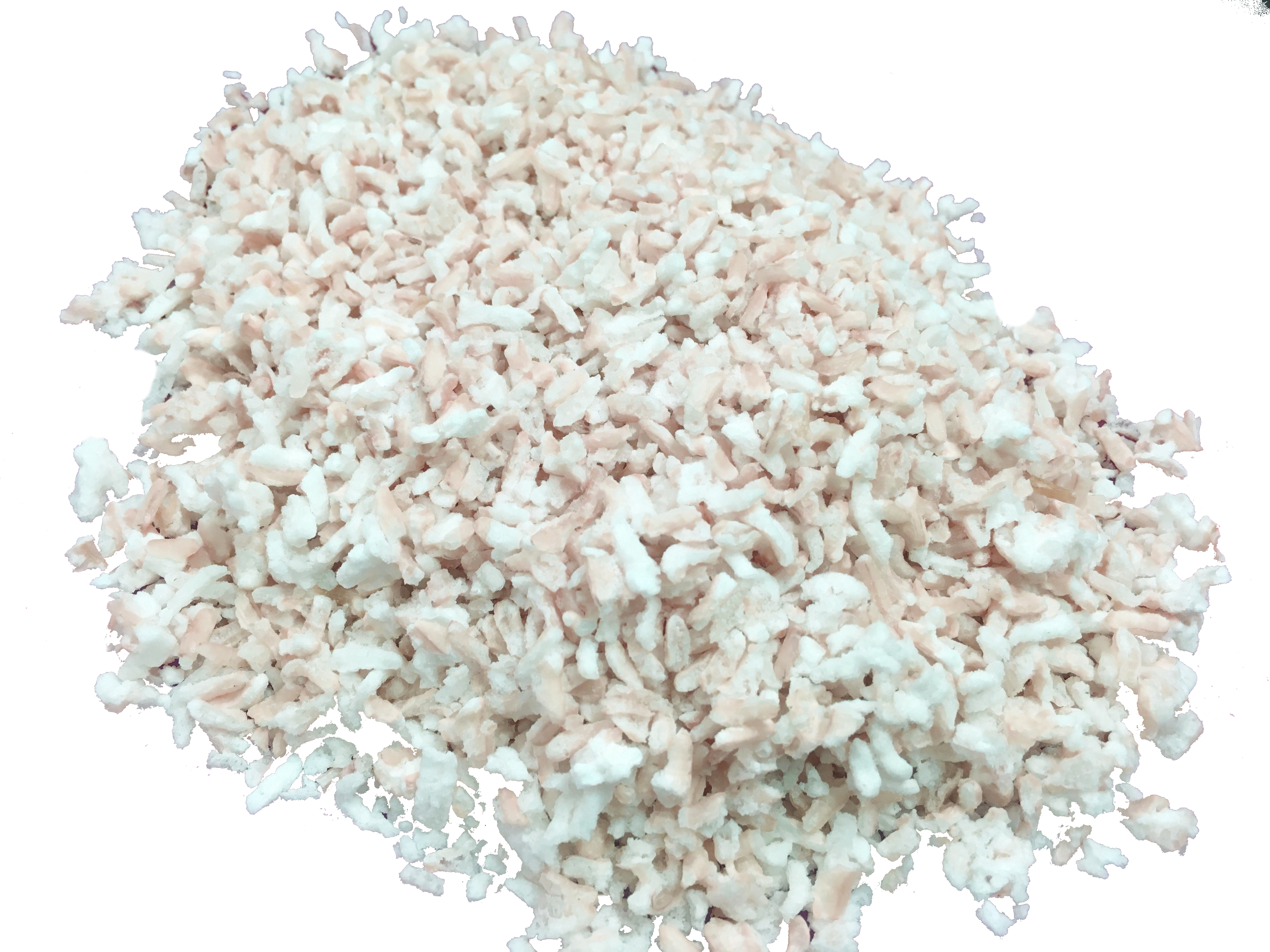
Canned Beans or Instant Beans
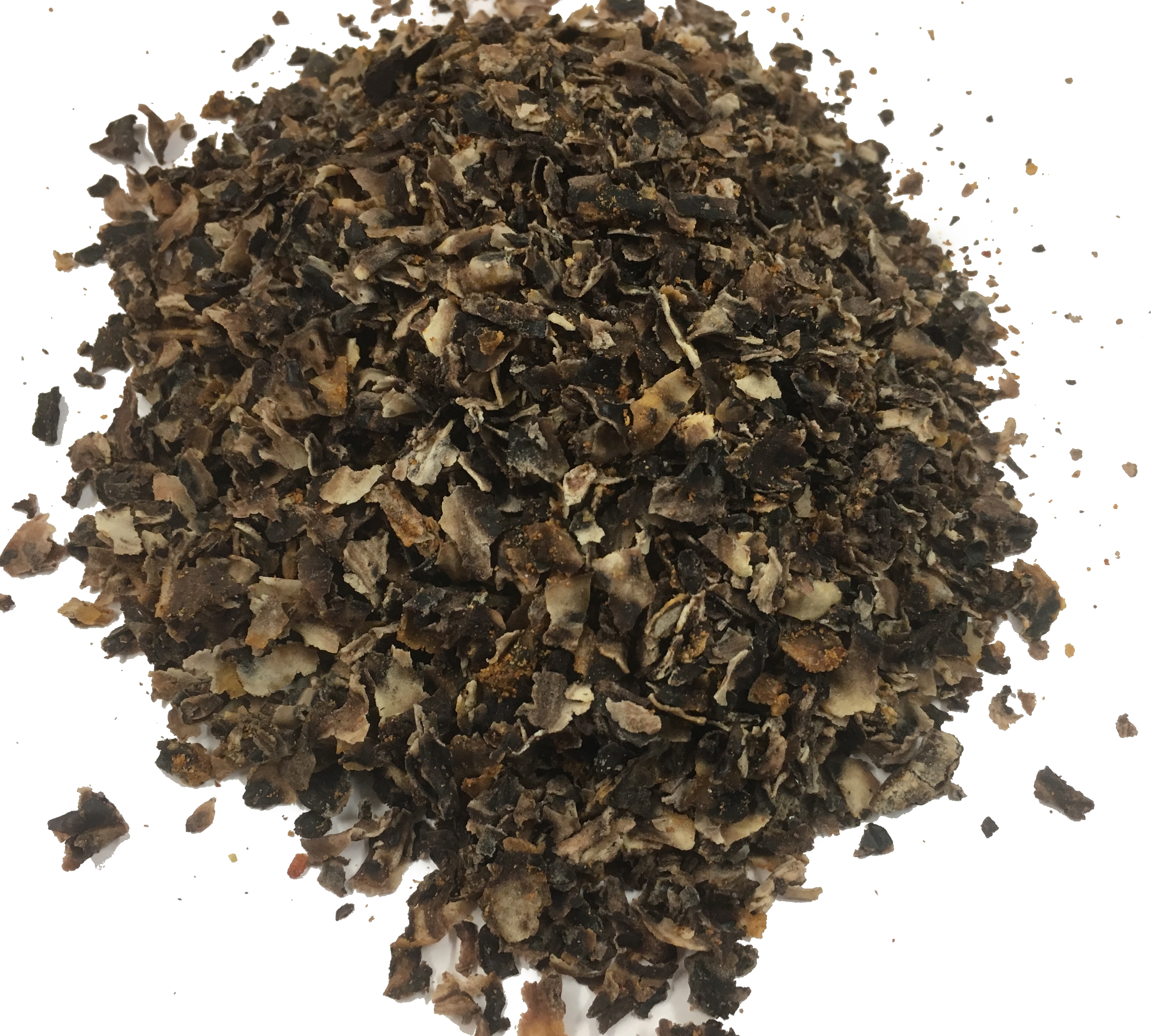
Beans are an excellent shelf-stable protein source. Make sure the beans are pre-cooked, either canned or packaged. Precooked beans sold in plastic packages will say “instant,” “pre-cooked,” or “flaked” on the box. Canned beans are your best bet because they are available in all grocery stores, but you must eat the entire can once it’s opened. Flaked beans will hydrate the quickest and give you more flexibility for meals since you decide how much to use.
- Do not buy dried beans sold in bags or bulk bins that are not precooked. Dry uncooked beans must be cooked in a pressure cooker or for several hours on a stove. Tip: If all you have is uncooked dry beans and no fuel, in an emergency, you can make the beans edible and eat them raw by sprouting.

- Make a Simple Burrito: Mix instant rice, 1 can of beans, and 1 packet of taco seasoning and heat up on the stove. Roll into a flour tortilla to make a burrito. Stock up on instant boxes of rice, canned pinto beans, and tortilla from the grocery store. You can also purchase instant brown rice, cheesy refried bean mix or spiced black bean flakes, or plain instant pinto bean flakes from Outdoor Herbivore.
Instant or Quick Cook Pasta
Dry pasta and noodles are excellent staple food to keep on hand for emergencies. Make sure the pasta is fast cooking, ideally ones with a 4-10 minute cook time. Pasta doesn’t need to simmer for the stated cook time. Like instant rice, you can conserve fuel by soaking the pasta in boiling water and keeping it covered for the suggested cook time.
- Thinner and smaller shapes made from semolina wheat will soften the fastest. For spaghetti, look for angel hair for fast cooking.
- Pasta can be made from any grain, not just wheat. You can find pasta made from quinoa, corn, amaranth, rice, starch, chickpeas, and lentils. Keep it interesting by varying it up.

- Asian noodles are ideal for emergencies because they cook quickly. You can find these in the Asian section of your supermarket or specialty grocers.
- Somen noodles are a thin Japanese noodle made from wheat and are quick-cooking.
- Vermicelli noodles are made from rice and fast cooking.
- Starch Noodles are translucent in color and have a stringy texture. They are made from pure starch, usually from mung bean, rice, or sweet potato.
- Ramen noodles are usually pre-cooked and fried and can be eaten raw or cold soaked; however, the massive processing makes them high in sodium and a poor source of nutrients. Add freeze-dried vegetables to enhance the nutrition of ramen soups.
Couscous
Get the North African variety of couscous resembling yellow cornmeal. This version has been pre-steamed and dried and will reconstitute in 5 minutes when covered with hot water. Look for pre-seasoned couscous to simplify meal planning.
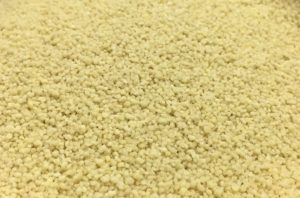
If you have plain couscous, here is an easy recipe
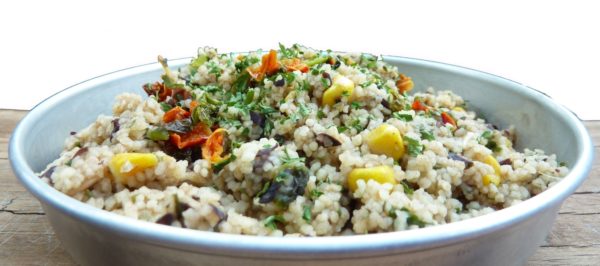
Southwest Couscous Recipe – Serves 4
- 1 Cup of Instant Couscous (use Quinoa for gluten-free version)
- 1 Can of Black Beans, drained & rinsed or 1/2 Cup of Black Bean Flakes
- 1/2 Cup Corn, canned or freeze-dried
- 1/2 Onion, chopped or 3 TB dried onion flakes
- 1 Bell pepper, chopped
- 1 tsp Cumin Powder
- 1 clove of garlic crushed or 1/4 tsp dry garlic
- 1/4 tsp Salt
- 2 tsp Cilantro flakes (optional)
- 2 tsp Oregano flakes (optional)
Cooking Instructions: Prepare couscous in a saucepan according to instructions. The proportions for cooking couscous to water are generally 1:1. Boil 1 cup of water, then add 1 cup of couscous, cover the pan, turn off the heat, and allow to hydrate in hot water for about 10 minutes. 1 cup of dry instant couscous makes 1.5-2 cups of cooked couscous. In a separate pan, saute chopped onion in a pan until golden. Add bell pepper, drained and rinsed black beans, corn, garlic, cumin, and salt, then stir until softened. If using flaked beans, add a small amount of water to the pan to soften. Mix with the couscous and sprinkle with dried cilantro and parsley before serving, if desired.
Instant Quinoa
Quinoa is an excellent gluten-free alternative to couscous. Look for instant quinoa if conserving fuel. You can also use quinoa instead of oats (or in combination with oats) for hot cereal.
 Cooked Instant Tri-Color Quinoa
Cooked Instant Tri-Color Quinoa
Corn Grits
Grits equally complement sweet and savory toppings. Look for instant grits or instant masa to conserve fuel. Masa is Mexican-style cornmeal that has been nixtamalized (typically with lime) to release the niacin nutrient. For breakfast, try adding cinnamon, sugar, and nuts. Make a delicious polenta-type meal by adding dried cheese, Italian spices, garlic, and sun-dried tomato as an entree.
Look for non-GMO corn or organic corn. Most brands use GMO corn for instant products (in the US, the corn is GMO if the package does not specify).

Dry Milk and Cereals
If you plan on eating cereal for breakfast, consider non-dairy milk packaged in shelf-stable aseptic boxes. Most don’t require refrigeration even after opening. UHT dairy is also available if you drink cow’s milk. Dried milk is another option. Organic soy milk powder stores well long-term and works well for pancakes.
Tortillas

Tortillas are more versatile than bread. They can be used as a wrap, rolled into a burrito, two sandwiched together as a quesadilla/sandwich, folded like a taco, or a flatbread. Tortillas also heat up nicely on a grill.
Potato Flakes
Potato makes an excellent thickener and filler for soups. Get organic flaked potatoes (conventional potato has more pesticides by weight than any other food).
Dry Meal and Soup Mixes
These are generally easy to find in stores, but make sure the packets are pre-cooked or instant. You don’t want the dry bean soup mixes meant for a slow cooker. Soup mixes can also be used as a sauce for noodles, rice, and potatoes. Outdoor Herbivore carries many soup mixes and meal mixes for hot or cold water use.

Prepare Sensibly
Can Outdoor Herbivore’s meals be used for emergency storage? While we don’t recommend our food for long-term storage, it’s perfect for shorter-term emergency storage (1 – 3 years). We suggest you keep a few packets on hand for a last-minute trip or a fast meal at home — disaster or not. Our food is tasty enough to eat at home, so you don’t have to throw it out if that trip or emergency never happens.
Stay Safe!